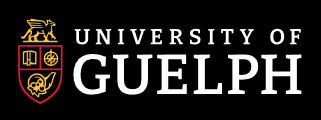






![]()
![]()




![]()
![]()
![]()
![]()


![]()
![]()


Current Issue
Publication Information: https://www.scilit.com/publishers/98817
Published paper title Search: https://search.crossref.org/
Articles
Academic Journal of Emerging Technologies (AJET)
ISSN Print: 3104-4417 | ISSN Online: 3104-4425
Positioning:
Academic Journal of Emerging Technologies (AJET) is an international, peer-reviewed, open-access journal dedicated to advancing cutting-edge research in all domains of transformative and rapidly evolving technologies. We serve as a premier interdisciplinary platform for disseminating high-impact discoveries, fostering discourse on future trends, and showcasing innovations with the potential to reshape industries and society.
Core Commitment: Universal Scope
AJET embraces the entire spectrum of emerging technologies without disciplinary boundaries. Our fundamental mission is to publish pioneering research across every field and sub-discipline where significant technological innovation is occurring. We champion the inherently cross-disciplinary nature of modern technological advancement.
Emphasis on "Emerging" & "Transformative"
The journal prioritizes technologies characterized by their novelty, rapid pace of development, and disruptive potential to challenge existing paradigms or address critical global challenges. We focus on foundational advances poised to create significant future impact.
Comprehensive Scope (Illustrative - Encompassing All Areas)
AJET explicitly welcomes submissions on all topics within emerging technologies, including, but not limited to:
- Artificial Intelligence & Machine Learning (AI/ML): Generative AI, Foundational Models (LLMs, LVMs), Explainable/Trustworthy AI, Federated Learning, Neuromorphic Computing, AI Ethics & Governance, Causal AI, AI-Hardware Co-design.
- Quantum Technologies: Quantum Computing & Algorithms, Quantum Communication/Cryptography, Quantum Sensing & Metrology, Quantum Simulation, Quantum Materials, Quantum Software.
- Advanced Computing & Data Science: High-Performance/Exascale Computing, Edge/Fog Computing, In-Memory Computing, Photonic Computing, Advanced Data Analytics, Privacy-Enhancing Technologies (PETs), Computational Modeling & Simulation.
- Biotechnology & Biomedicine: Genome Editing (CRISPR, Base/Prime Editing), Synthetic Biology, mRNA & Nucleic Acid Therapeutics, Cell & Gene Therapy (CAR-T, etc.), Tissue Engineering & Regenerative Medicine, Microbiome Engineering, Wearable & Implantable Bioelectronics/Sensors, Bioinformatics, Precision Medicine, Neurotechnology.
- Nanotechnology & Advanced Materials: 2D Materials (Graphene, MXenes), Nanofabrication, Smart/Responsive Materials, Self-Healing Materials, Biomimetic Materials, Nanomedicine, Nanosensors, Metamaterials, Structural Composites.
- Robotics & Autonomous Systems: Soft Robotics, Swarm Robotics, Micro/Nanorobotics, Human-Robot Collaboration (Cobotics), Autonomous Vehicles/Drones, Tactile Robotics, AI-Powered Robotics, Robotic Perception & Manipulation.
- Energy Technologies: Next-Generation Solar PV & Perovskites, Hydrogen Production/Storage/Fuel Cells, Advanced Energy Storage (Solid-State Batteries, Flow Batteries, Novel Chemistries), Grid Modernization & Smart Grids, Fusion Energy Technologies, Geothermal Innovations, Carbon Capture Utilization & Storage (CCUS).
- Information & Communication Technologies (ICT): Next-Generation Networks (6G/Beyond 5G, Terahertz Communications), Integrated Space-Air-Ground-Sea Networks, Massive MIMO, Advanced IoT/IIoT, Semantic & Intent-Based Networking, Visible Light Communication (VLC), Network Security Innovations.
- Aerospace Technologies: Reusable Launch Vehicles, Advanced Propulsion (Electric, Nuclear Thermal), Hypersonics, Small Satellites & Mega-Constellations, Advanced Navigation Systems, In-Space Manufacturing & Servicing, Planetary Exploration Technologies.
- Advanced Manufacturing: Additive Manufacturing (3D/4D Printing), Smart Manufacturing/Industry 4.0/5.0, Digital Twins for Manufacturing, Flexible & Hybrid Electronics (FHE) Manufacturing, Micro-Nano Manufacturing, Biomanufacturing.
- Sustainability & Environmental Technologies: Circular Economy Technologies, Green Chemistry & Catalysis, Advanced Waste Valorization & Recycling, Pollution Monitoring & Remediation Technologies, Sustainable AgriTech/Food Tech, Water Treatment & Management Technologies, Climate Resilience Technologies.
- Cognitive & Neuro-Technologies: Brain-Computer Interfaces (BCIs), Neuroprosthetics, Neuromodulation, Cognitive Enhancement Technologies.
- Immersive & Spatial Technologies: Extended Reality (XR – AR/VR/MR), Metaverse Infrastructure & Applications, Holographic Displays, Spatial Computing, Digital Twins for Cities/Infrastructure.
- Cryptography & Security: Post-Quantum Cryptography (PQC), Homomorphic Encryption, Secure Multi-Party Computation, Blockchain & Distributed Ledger Technologies (DLT), Cybersecurity for Critical Infrastructure.
- Interdisciplinary & Frontier Domains: Biohybrid Systems, Quantum Biology, AI for Science (AI4Science), Neuro-AI Convergence, Robotics in Healthcare/Agriculture, Materials Informatics, Nanophotonics, AgriTech 4.0, Blue Economy Technologies (Marine/Ocean Tech), EdTech Innovations.
Article Types:
- Original Research Articles: Substantial reports of novel and significant research findings (core content).
- Comprehensive Review Articles: Critical surveys, evaluations, and forward-looking perspectives on specific emerging technology fields.
- Letters/Rapid Communications: Concise reports of particularly urgent, timely, or groundbreaking results.
- Perspective/Commentary Articles: Expert insights on new directions, ethical considerations, societal impacts, policy issues, or emerging controversies within the technological landscape.
- (Optional) Case Studies: Detailed analyses of the implementation, impact, or challenges of deploying emerging technologies in real-world settings.
Mission Statement:
- To be the premier open-access forum for disseminating transformative research across all emerging technology disciplines.
- To stimulate and facilitate cross-disciplinary dialogue and collaboration among researchers, engineers, and policymakers globally.
- To accelerate the advancement and responsible deployment of technologies with revolutionary potential.
- To critically examine the ethical, societal, economic, and environmental implications of emerging technologies.
- To maintain the highest standards of scientific rigor and integrity through a robust peer-review process.
Target Audience:
- Academic researchers and engineers specializing in cutting-edge technologies worldwide.
- R&D professionals and innovation leaders in high-tech industries.
- Government officials, policymakers, and funding agency representatives focused on science, technology, and innovation strategy.
- Technology entrepreneurs and venture capitalists.
- Graduate and advanced undergraduate students in STEM fields.
Open Access Policy:
AJET is committed to open science. All published articles are freely and immediately accessible online upon publication under appropriate Creative Commons licenses, ensuring maximum visibility, accessibility, and impact for authors' work globally.
Call for Participation:
Researchers: Submit your groundbreaking work covering any domain of emerging technology.
Reviewers & Editors: We invite leading experts to join our editorial board and contribute to our rigorous peer-review process.
Together, we explore the frontiers of innovation.



Erytis Publishing Limited
Always Open for Submissions
Peer-review
Online First
Open Access
Your work will be permanently available online, free to download, share and read
 Copyright © 2025 by authors and Erytis Publishing Limited.
Copyright © 2025 by authors and Erytis Publishing Limited.
Copyright and Licensing
Articles published by Erytis Publishing Limited journals are under a Creative Commons Attribution 4.0 International (CC BY 4.0) (https://creativecommons.org/licenses/by/4.0/) license, allowing users to copy, distribute and transmit an article and adapt the article and make commercial use of the article. The CC BY license permits commercial and non-commercial re-use of an open access article, as long as the author is properly attributed. This ensures that the work gets maximum exposure, and the authors receive due credit for their contribution.
Copyright on any open access article published by Erytis Publishing Limited is retained by the author(s). Authors grant Erytis Publishing Limited a license to publish the article and identify itself as the original publisher. Authors also grant any third party the right to use the article freely as long as its original authors, citation details and publisher are identified.





